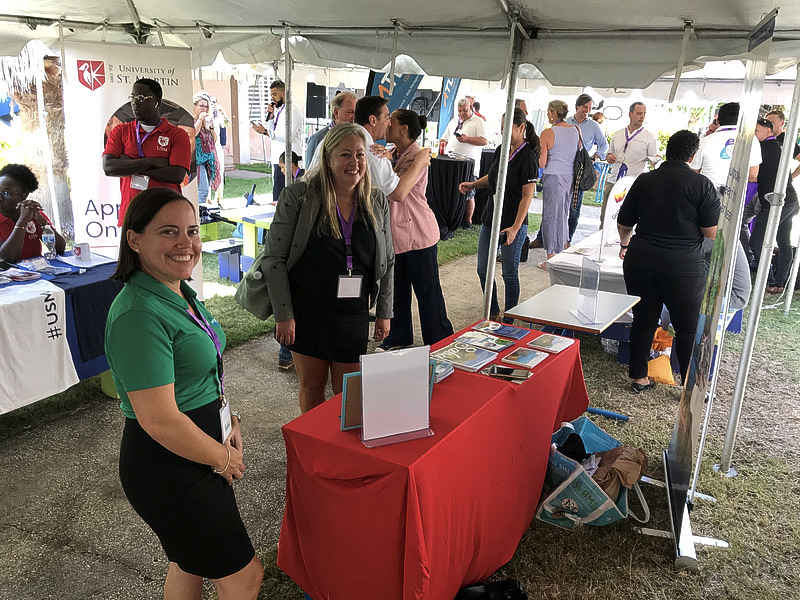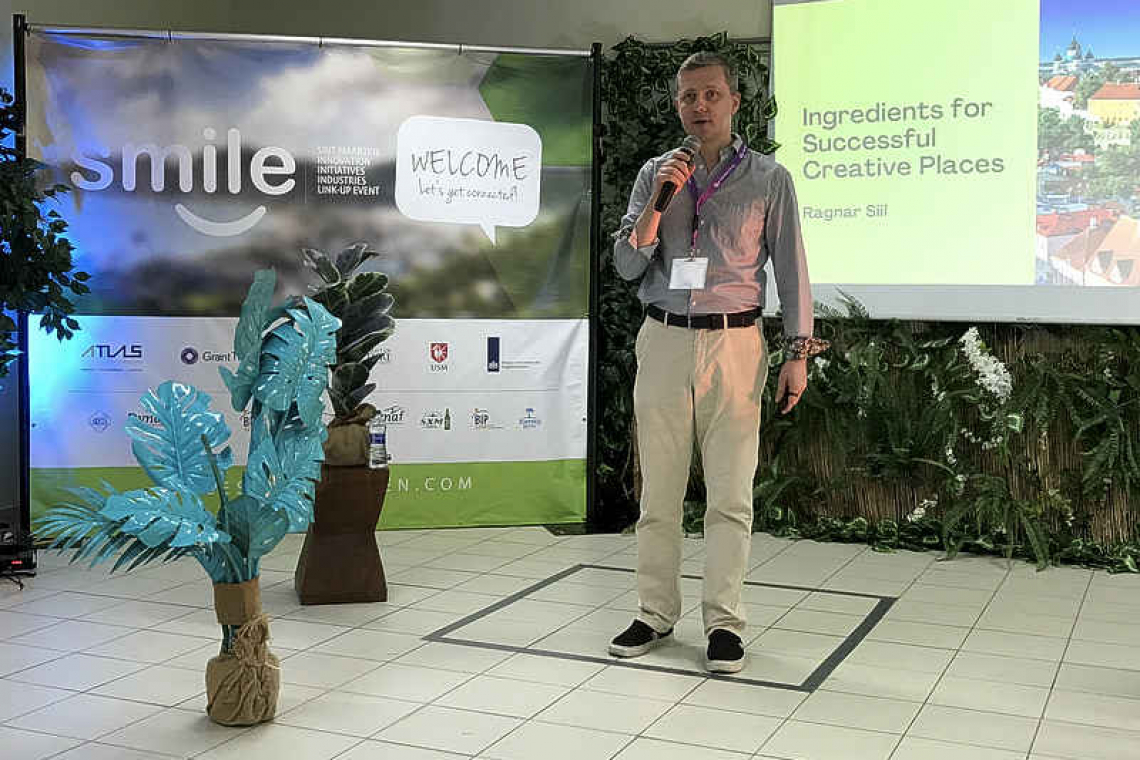Keynote speaker Ragnar Siil gives his presentation during the SMILE event at University of St. Martin on Saturday. (Robert Luckock photo)
PHILIPSBURG--Culture tourism and creative tourism, and how St. Maarten can benefit from adapting to this growing trend, were themes discussed during invited keynote speaker Ragnar Siil’s presentation during the St. Maarten Innovations, Initiatives and Industries Link-Up Event (SMILE) on Saturday.
Siil is a former Secretary of State for the Arts of Estonia, Chairman of the European Union Expert Group on Cultural and Creative Sectors, and founder and director of Creativity Lab, a leading cultural policy and creative industries think-tank and consultancy.
Despite a time-limit on all the SMILE presentations, he packed in a lot of information, while also joking he had a hard time convincing his wife back in Estonia where it was snowing that he was in fact working.
“Culture tourism has become more and more important, according to the data,” he said. “In the European Union some 40 per cent of tourists are culture tourists; that’s four out of 10 saying their primary reason for travel is the cultural experience.
“The data also show us that these tourists tend to stay longer and spend more, depending on the region, some studies said 22-38 per cent more time spent. Culture tourism within tourism is one of the fastest growing sub-sections of the industry, and creative tourism with it. These people want different experiences and to be engaging with local people and communities, and don’t want to be just bystanders. Above all they are looking for immersive experiences.”
Citing an example of an immersive experience he described how tourists in the country of Georgia pay to take off their shoes and press grapes at a famous vineyard.
He said the two most impactful take-aways from travel that are most likely to be passed on are the best and disappointing experiences, and the second, the last memory that is retained. Experiences also leave an impact on the senses.
With climate change affecting the whole world, he said, focus on sustainable and responsible business models become more important and mass tourism less of a long-term solution.
“It’s the reason why cultural tourism has become so attractive. It doesn’t mean we need more of these tourists; it means we might need less because they are more affluent, more engaged and more involved.”
Explaining the nuances between cultural and creative tourism, creative tourism means being active as opposed to passive. It is based on learning and integration into the social fabric of the place, for an authentic and sustainable experience based on local resources.
“We use the visitor’s creativity to enrich our own creativity. We engage them in the activity. That’s the idea behind changing cultural landscapes and cities.”
Siil said he had been absolutely “blown away” by the local talent pool of artists, poets and musicians at the Treaty of Concordia anniversary and a culture forum that he attended, and it was the poetry that had moved him the most. He went said the poet at the Joe Biden inauguration had not come close to what he had heard and experienced in St. Maarten, comments that left Clara Reyes in the audience beaming with pride.
He picked some principles for tourism planners in St. Maarten to keep in mind. First, adopt a mind-set of creative bureaucracy; second, be distinctive and diverse, because it is something unique to offer.
“Sun, sea and sand will always be important, but it is universal, not what makes or breaks you from your competitors. But learning something new, witnessing something amazing, and participating in something authentic – if these three things are in place for a vacation, it’s a very good thing.”
He also recommended that no tourist leaves the island without a book of poetry, a painting or print, a piece of music, something cultural and authentic from the island (and not from China).
St. Maarten can also consider whether it wants to become a UNESCO creative city; for example, to be a music or gastronomic island, or choose from any of the seven categories. This would give good visibility. There are currently six UNESCO creative cities in the Caribbean.

A view of the networking area at University of St. Martin set up for the SMILE event. (Robert Luckock photo)







